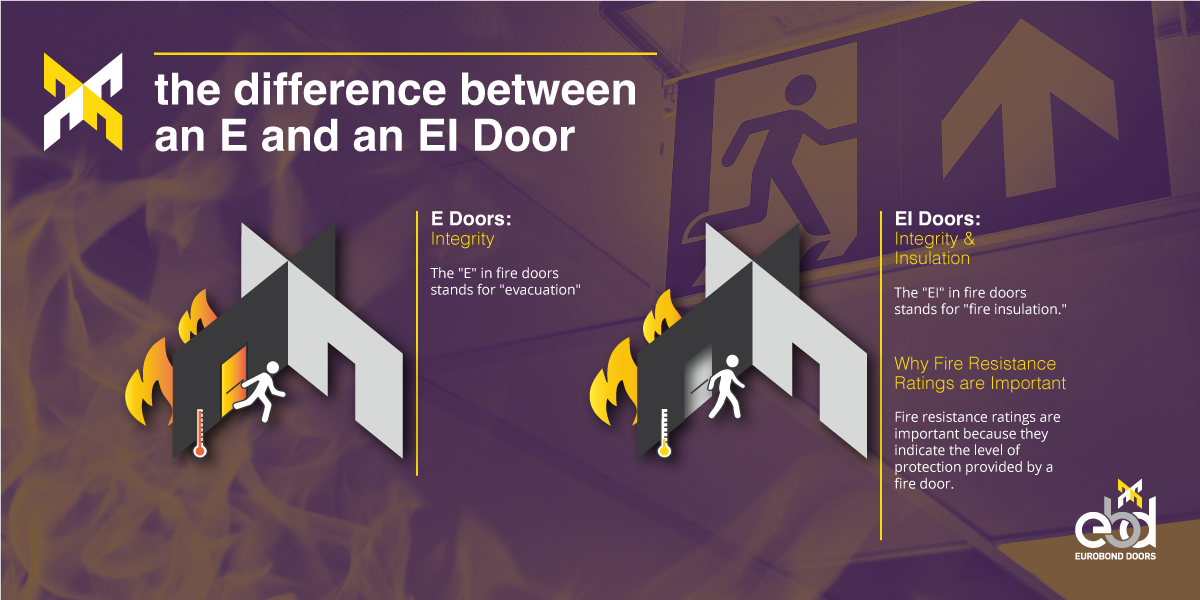Fire doors are a critical component of any building’s fire safety system. They are designed to prevent the spread of fire and smoke, provide a safe evacuation route for occupants and allow for the safe entry of the emergency services.

The Difference Between an E and an EI Door
Fire doors are a critical component element of any building’s fire safety system. They are designed to
prevent the spread of fire and smoke, provide a safe evacuation route for occupants and allow for the safe
entry of the emergency services. When looking for fire doors, there are two key terms to consider: “E” and
“EI.” This infographic simply and visually explains the difference between these two fire resistance ratings
and why they’re important.
E Doors: Integrity
The “E” in fire doors denotes a fire integrity performance. They are used for fire compartmentation, designed
as a physical barrier in strategic areas of a building to slow the spread of flame and smoke and to provide a
safe exit route in the event of a fire. While it provides an effective barrier against smoke and flame, it does
not prevent the transmission of heat.
The E classification offers the necessary fire performance to meet the UK Building Regulations and are
typically found in public buildings, such as schools and offices and must be easily accessible and provide a
clear path for occupants to escape.
EI Doors: Integrity & Insulation
Why Fire Resistance Ratings are Important
Fire resistance classifications are important as they indicate the level of protection provided by a fire door.
When selecting fire doors for your building, it’s important to understand the required fire resistance
performance for each location. E doors should be used in areas where occupants may need quick
evacuation, while EI fire insulation doors should be used in areas where the spread of fire and smoke must
be prevented from the added risk of transmitted heat.
Fire doors can slow the spread of fire, allowing time for occupants to evacuate and for emergency
responders to arrive. The added protection can make a significant difference in the outcome of a fire and can
help to save lives and reduce damage to property.
In conclusion, understanding the difference between E and EI fire doors is essential when selecting fire
doors for your building. E integrity doors can provide a safe exit route for occupants, while EI fire insulation
doors provide insulation against heat transfer and smoke. When selecting fire doors, it’s important to choose
doors with the appropriate fire resistance rating for each location to ensure the highest level of protection for
occupants and property.
To speak to one of the EBD Technical Team click here



